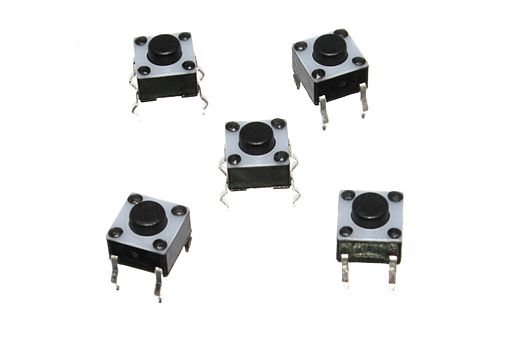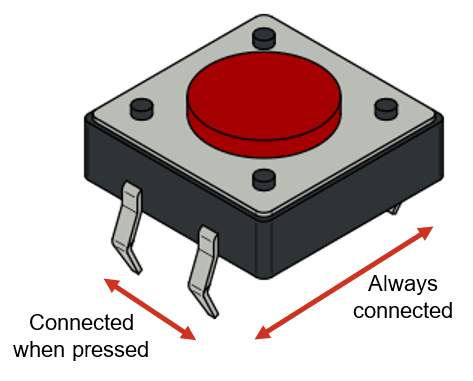Pushbuttons
A pushbutton is a type of switch which is normally open, but closes when the button is pressed.

Pushbuttons have four legs. Those on opposite sides are connected together permanently. Those on the same side form the switch. When the button is pressed, all four of the legs are connected together. When you are connecting a pushbutton into your circuit, you need to be careful which way round it goes. A pushbutton usually sits comfortably over the central gap in a standard breadboard.

While the button is not pressed, part of the circuit is idle and it may be affected by electromagnetic fluctuations in the environment. Sometimes, these can induce a strong enough current in the wire to register as a high signal. To prevent this from happening, we can add a high-valued resistor into the circuit to create a ground connection. The resistor is called a pull-down resistor because it pulls the voltage in the idle element down to zero. When the button is pressed, the majority of the current flows through the main circuit because it has a relatively low resistance. This is illustrated below.
